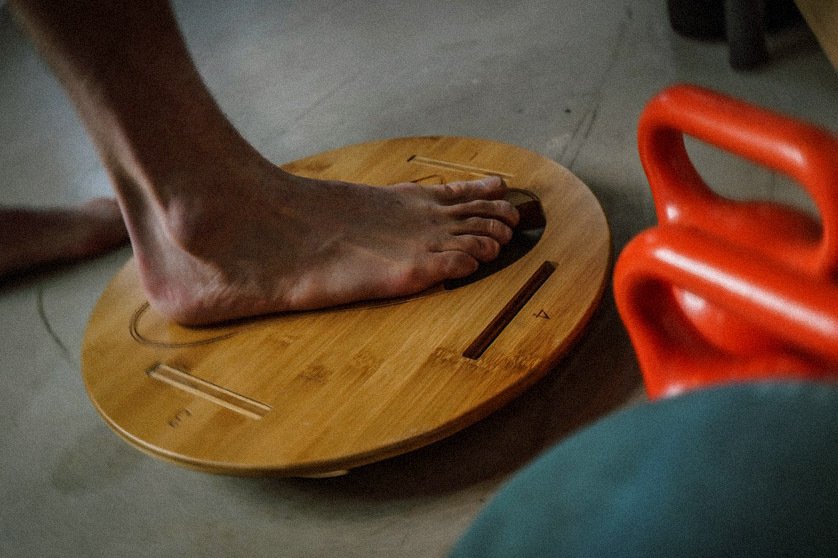Distance runners tend to be good about “the little things.” We get our planks and push-ups in, we’re diligent with our form drills, we eat and drink with intention, and we foam roll, muscle scrape or self-massage when needed. But for some reason, many of us neglect one body part that — heart aside — may be our most valuable in the context of this sport: our feet.
With 26 bones, 33 joints, 19 muscles and 57 ligaments, there’s a lot happening inside each foot. Fat pads beneath each heel act as shock absorbers, while the arches work like springs, storing and releasing energy every time we land on the ground and roll off our toes. If walking sounds like a feat, try to gasp the marvel that is running. It’s both a balancing act, with just one foot planted at a time, and a test of strength, with two to three times our body weight slamming into the ground every time we touch the ground (close to 190 times per minute for me, which totals about 17,000 on an average run).
While foot injuries among runners are relatively common — both plantar fasciitis and Achilles tendinopathy have knocked me out more than once — it’s a wonder they’re not inevitabilities. It often takes a setback to fully appreciate what our feet do for us on a regular basis, and start taking measures to keep them healthy, strong and stable. My most recent injury (an unexplained, lingering pain in the insertion of one Achilles) was the wake-up call I needed to give foot strength a permanent place in my supplemental exercise routine.
Although most of my footwork can be done with minimal equipment (like calf raises on a step, tip-toe walking, ankle pumps and toe yoga), I’ve added one foot-specific tool to my collection that I now use several times a week: MOBO Board. Designed by Jay Dicchary, a physical therapist, biomechanics researcher, injury prevention expert and the author of Running Rewired and Anatomy for Runners, this board is an ingenious upgrade to the wobble boards found in most gyms. Touted as “the only product designed to build better foot control specific to the architecture of your foot,” it’s a circular board that looks like a thick, oversized frisbee, with a right foot side and a left foot side, two movable fins and a hole where your four smaller toes would normally grip.
MOBO stands out from other stability boards in a few key ways. The hollow toe box teaches you to drive your big toe into the ground and recruit your arch, rather than relying on the grip of your weaker toes to get the job done. Thanks to the two fins, the anatomical axis promotes internal motion control in two safe and relevant-to-running planes. The board’s design fosters coordination between your planted foot and your legs, hips and core — all critical relationships for anyone striving for a well-controlled and smooth stride. Finally, the textured bamboo surface means you can safely use it barefoot, recruiting all those little muscles that don’t get used while stuffed inside a shoe, and also improve your proprioception (a fancy word for body awareness).
The ultimate MOBO perk is its sheer versatility. Whether you stick with the standard exercises demonstrated online — 5 for Feet (exercises that focus on arch control and coordination) and Crazy 8’s (ones that integrate foot control into total body movement) — or bring other exercises to the board to up their challenge, your options are essentially limitless. I found it worthwhile to spend a couple of months mastering the basics before I started experimenting. Now, whenever an exercise starts feeling easy, I’ll either replace it with a new one or simply add weight (typically a kettlebell) or resistance (using the band that’s included or a power band).
I also love that MOBO users are encouraged to practice “frequently in small doses to minimize brain fatigue.” In other words, it’s important to focus on executing each movement properly rather than just ticking off the boxes. It’s also not necessary to invest huge chunks of time to this, which busy athletes will surely appreciate. I find five to 10 minutes a few times a week (usually right after running) to be effective and sustainable, especially since I constantly mix up what I do. My current standbys are: foot rocks, weighted tippy bird, and landmine single leg deadlift from the online arsenal, plus Bulgarian split squats (with my front foot on the board), pretty much any standing arm exercise (running arms with 5-pound weights is a favorite), and glute/hip pulses (with a miniband around my ankles or knees). I typically go until I feel my form or posture breaking down, and then pause for a bit before starting a new move. If I’m not strapped for time, I’ll alternate a core exercise with a MOBO exercise so I’m relatively fresh each time I switch.
Considering all that my feet do for me — thousands of miles of running each year, for starters — some dedicated footwork a few times a week is the least I can do in return. Is a MOBO Board a prerequisite for healthy feet? Definitely not. But it sure makes it easy to make footcare a habit, and I’ve yet to see anything specifically for feet that’s as well designed, versatile, or relevant to running. Take it from me and the countless other pro runners I know who are also loyal users: MOBO Board is a runner’s gamechanger.
The Charge will help you move better, think clearer and stay in the game longer. Subscribe to our wellness newsletter today.























